In the Klosterstraße in Berlin Mitte stands the oldest church of the reformed community of Berlin. The Parochial Church has not only an interesting nave, but also a churchyard and a crypt that should not be missed.
History of the Church
In 1613, Brandenburg’s Elector Johann Sigismund converted to Calvinism and, as was so common at the time, the change of faith also took place among his subjects. The Parochial Church was built a few years later for the followers of the Reformed Church.

In 1694, the master builder Johann Arnold Nering planned the construction of the church. Inspired by Dutch and Italian influences, his plans were to be implemented after the foundation stone was laid in 1695. However, Nehring died a short time later. His successor was Martin Grünberg.
Grünberg tried to spend as little money as possible on the construction work and changed the plans. In doing so, however, he took care to integrate sections of construction that had already been completed. As is well known, saving money is not always an advantage in construction. In September 1698, the almost completed roof vault collapsed. Thus, the completion of the building was delayed and it was not until 1705 that the construction of the church building was finished, although there was still no “real” church tower.

The “singing clock”
In 1713, King Frederick I donated a carillon to the Parochial Church to be hung in the church’s tower, which had not yet been completed.
One floor, where the carillon hung, was designed open, the spire rose slender and obelisk-like. Four lions made of stone decorated the tower.

In 1715 the carillon sounded for the first time, but the sound was said to be very unclean. A new carillon was commissioned, consisting of 37 bronze bells. A mechanism coupled to the tower clock made the bells play every hour. The melodies were variable, but the roar of the lions that ended the game remained the same. The Berliners called the clock only “Singuhr” (singing clock).
Unfortunately, the upper part of the tower and the nave were almost completely destroyed during the Second World War, the bells were melted down and the original lions were probably lost forever.
Use of the Parochial Church after the Second World War
In the ruins of the church they first built an emergency church. From the scrap metal found in the church, Fritz Kühn created an iron cross in 1961, which was hung in the chancel.

One week after the construction of the Wall, the last service was held in the church on August 20, 1961. During the GDR period, the building was first used for exhibitions and concerts, and from 1970 furniture was stored in the church. For the 750th anniversary of Berlin, the church received a new roof in 1988.
With the reunification, the gradual restoration of the Parochial Church took place. The bell tower with the carillon and the distinctive spire could also be rebuilt.
View into the Parochial Church
I enter the church through a side door and am initially taken aback. It looks quite different here than one is used to from a church. The walls are unplastered, as if standing in a shell. There are some pews and the “scrap cross” in the room, but that’s really all. If you look up to the ceiling, you can see into the roof truss. I like it to see a church in a completely different way.

The carillon of the church today has 52 bells, which can be easily seen through the opening in the tower. There is a tower room where a carilloneur can play the carillon. But it can also be played automatically. Usually you can hear the carillon daily at 9, 12, 15 and 18 o’clock during the prayer times.
Today, the church hosts church services, exhibitions and meetings.

The churchyard and crypt
Behind the church is the churchyard. Here lies one of the oldest preserved cemeteries in Berlin. Around 1706 the first burials took place here. It is said that over 5500 dead were buried here. After 1854 there were still some isolated burials, but actually the cemetery was officially closed.
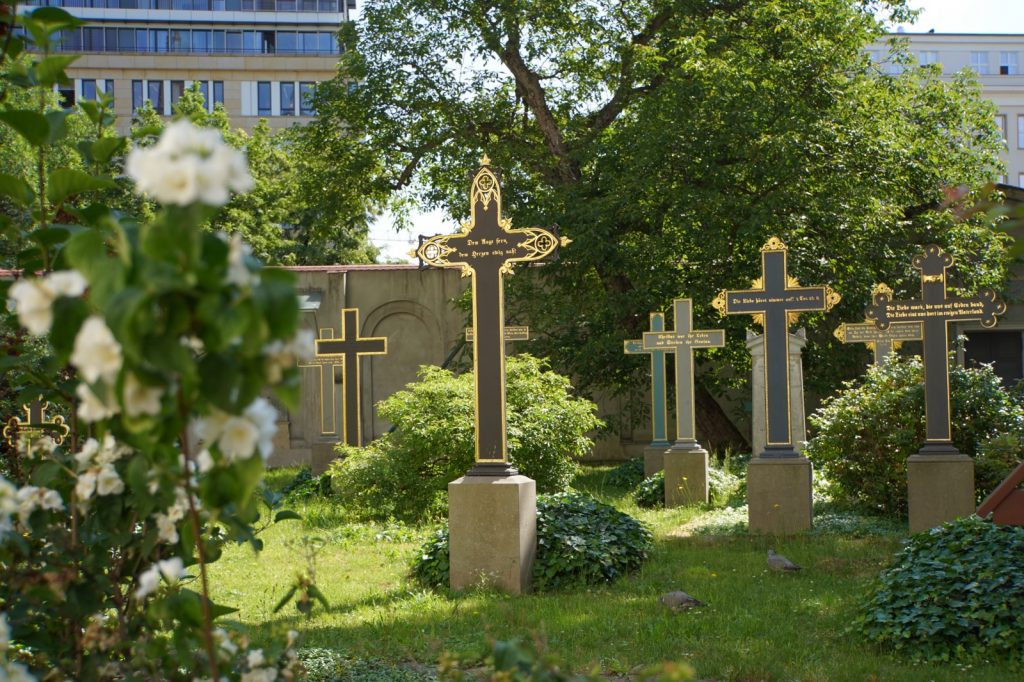
I find the large iron crosses with their gilded inscriptions beautiful. There are two mausoleums on the enclosing wall. Also beautiful is the angel figure in the center of the churchyard, which adorns a communal grave.
The crypt is located under the Parochial Church houses 147 coffins in 30 burial chambers. These are said to be very well preserved. One reaches the burial chambers through 25 wooden doors, which are among the largest inventory of Baroque burial chamber doors in Europe. Remarkable is the natural ventilation, which is preserved until today. The tomb can be visited only in exceptional cases.

Address:
Klosterstrasse 67
10179 Berlin
Opening hours:
Monday – Friday: 9 – 15.30 h








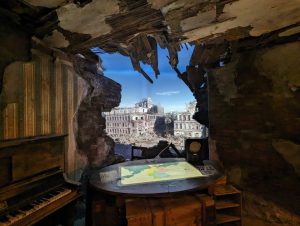






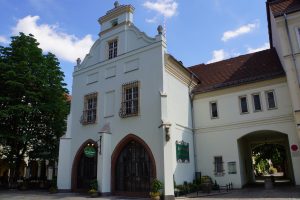

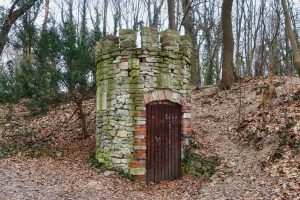
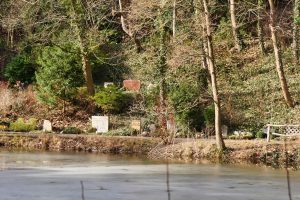
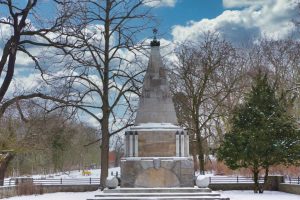





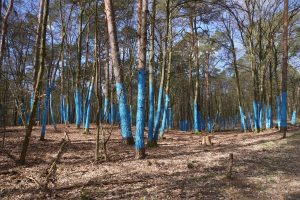




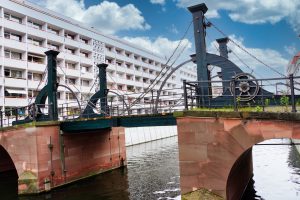
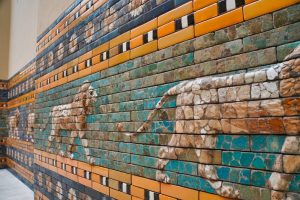



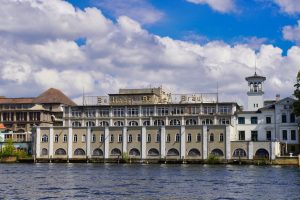









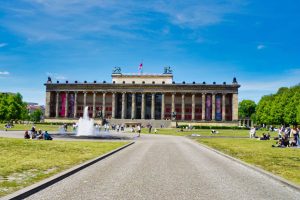




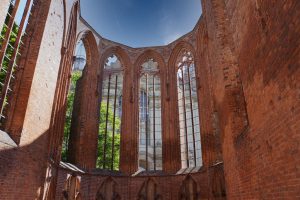



















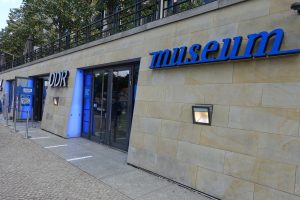





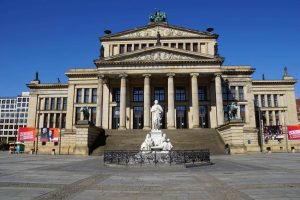







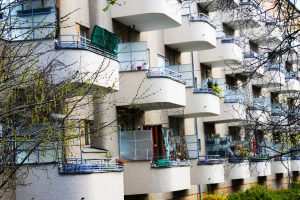










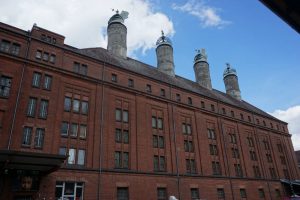





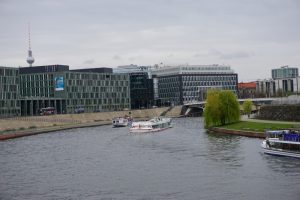
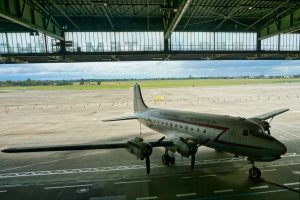








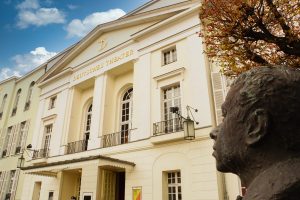


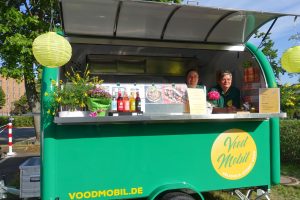















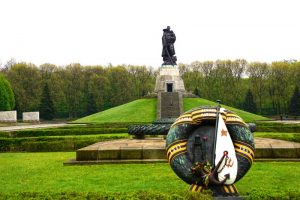














Leave a Reply